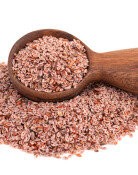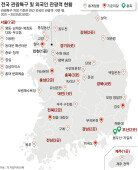Year 2015: The year of blue sheep
2015 is the year of blue sheep. Blue sheep (see photo) are called fortunate animals as they are the combination of sheep, the symbol of peace and fortune, and the active blue color. Are there blue sheep on earth?
There is none in Korea but there are animals called blue sheep in the Himalayas, Bhutan, and the mountainous areas of Pakistan.
Blue sheep are more like goats rather than sheep, which people grow for wool. They are about 165 centimeters long and around 90 centimeters tall. Males are generally bigger than females, and both males and females have a horn. Though they are called blue sheep, the color of their wool is more like brown and grey. They are named as blue sheep as the color of their wool is faintly bluish. Their wool, which is greyish blue, can be a perfect protective color in rocky mountains where they live.
Just as the color of the wool of blue sheep is closer to grey than clear blue, it is not easy to find an animal with a clear blue color. As blue is the most difficult color to find in the environment on earth, animals with a blue color can hardly survive, said Kim San-ha, secretary-general of the Biodiversity Foundation. For this reason, animals with clear blue pigments are very rare.
Animals with a clear blue color use blue not to hide themselves but to make themselves highlighted. The clear blue of poison frogs in tropical forests in Central and Latin America means a threat. A gram of poison from the frog can kill 8,333 people.
A blue color may not be a real blue. The color of the feathers of peacocks or the wings of Morpho butterflies is not blue but transparent. A feather of a peacock has multiple layers of transparent protein with a diagram of 100 nanometers (one nanometer is a one-billionth meter) and this causes the scattering of light. The sunlight is separated into natural colors and only blue is reflected to the outside. For such reason, the butterflies are seen as blue to us.
An international research team from eight countries led by the Australian team announced in science in June last year that sheep were separated from goats about four million years ago and they have evolved into what they look now. This is found based on the analysis of genomes just as the human genome project completed in 2003. The research team said, Wool, which is commonly used as a material for clothing today, is also the product of evolution. Processing fatty acid produced during rumination made wool greasier and warmer.
Headline News
- N. Korea redefines S. Korea as ‘hostile state’ in revised constitution
- Samsung develops graphic DRAM with industry-leading capacity and speed
- Three questions allegedly leaked via text message during Yonsei Univ. essay test
- China to inject 340 trillion won in loans to support real estate sector
- Dodgers beat Mets to take 2-1 lead in NLCS







